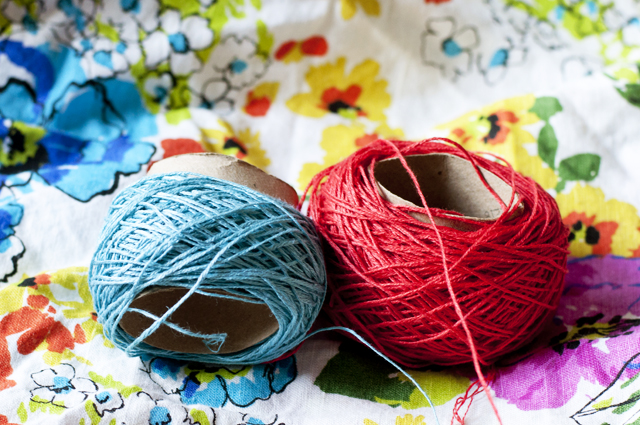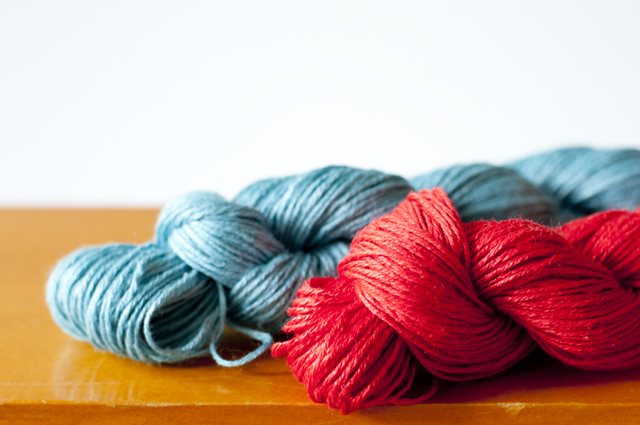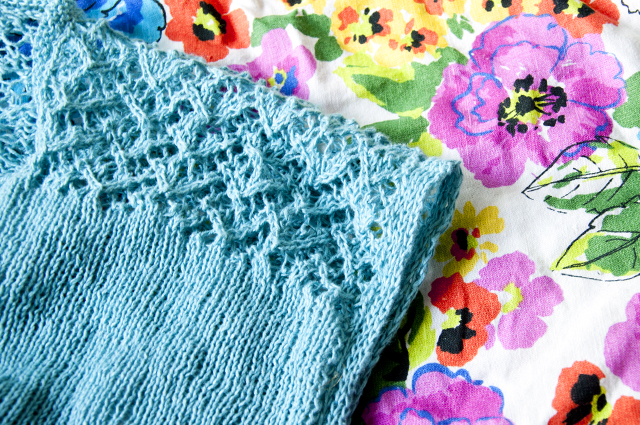The recommended yarn for the official OAL pattern Zinone is a fingering weight linen, which might not be a kind of yarn that many knitters have experience with. In the last five or six years, some amazing linen yarns have come onto the market, so it’s worth getting familiar with it. Here are six things you need to know about working with linen yarn before you get started on a linen project.

1. Use the right techniques.
Because linen isn’t at all like wool, you’ll need to use different techniques than you would for wool. For example, a lot of joins rely on the sticky, feltable properties of wool. Those aren’t going to be a good choice for linen. To join a new ball of linen, you’re best choices are something like the Braided Join, or working a dozen stitches with both the old and new yarn held together. The latter is the method I used for the Zinone samples. If a technique relies on felting or animal fiber’s grippy properties, steer clear of it.
2. Wind around a core.
Linen is both slick and inelastic, so center pull balls tend to fall apart and turn into a tangled mess. To keep things tidy, wind your yarn around a core. Cardboard tubes from toilet paper can be popped over a ball winder or nostepinne to easily make a ball with a cardboard core.

3. Frog without fear.
If you make an error in your knitting, you can rip back and redo the section as many times as you want without damaging your yarn. Linen isn’t delicate, and frogged linen is actually even easier to work with than fresh-off-the-ball linen. Your yarn will just get softer and easier to work with the more you redo a section, so rip back with confidence!
4. Beat it up.
Not only can linen handle a lot of abuse but it actually gets nicer the more it’s worn and washed. Agitation will give you a softer piece. You don’t need to worry about felting or pilling. I left a linen swatch in the bottom of my purse for over a month to see how it would wear, and it just got softer and shinier. To achieve that result without dragging your sweater around with you in a tote, send it through the wash a few times with your other loads of laundry.

5. Wet block it.
Linen is machine washable, and you can put it through the dryer without damaging it, but your project will come out with bunched up lace and uneven stitches. Instead, put it through the washing machine, lay it out flat, reshape it and open up any lace according to your schematic, and let it air dry. It will probably be crunchy when it’s dry, like line-dried jeans, but agitation is all it takes to soften the piece back up. You can send it through the dryer with no heat to air fluff it, which will get rid of the crispy feeling.
6. Let go of perfection.
Linen is wiggly, wrinkly, and wonderful. Your stitches are going to move around and look very sloppy when they’re fresh off your needle. Your finished sweater is going to wrinkle. Your stitches will never be as uniform as they might be when knit in wool. Just go with the flow and embrace it. All of these quirks are what makes linen so unique and gives it its casual elegance.
Leave a Reply